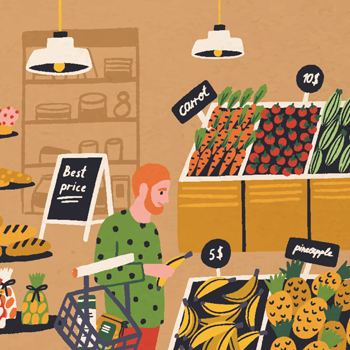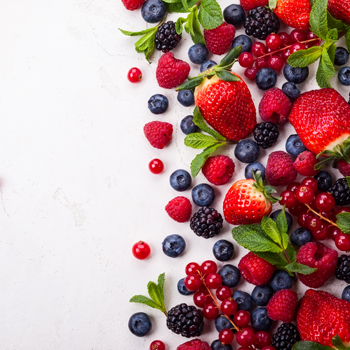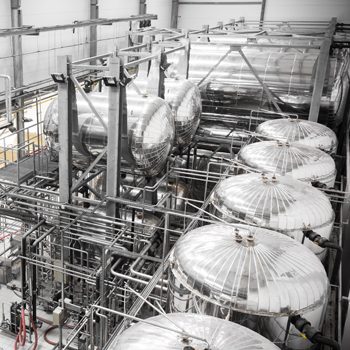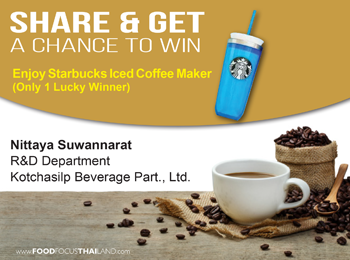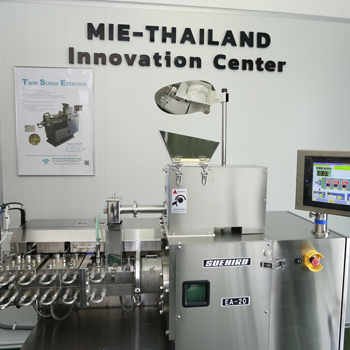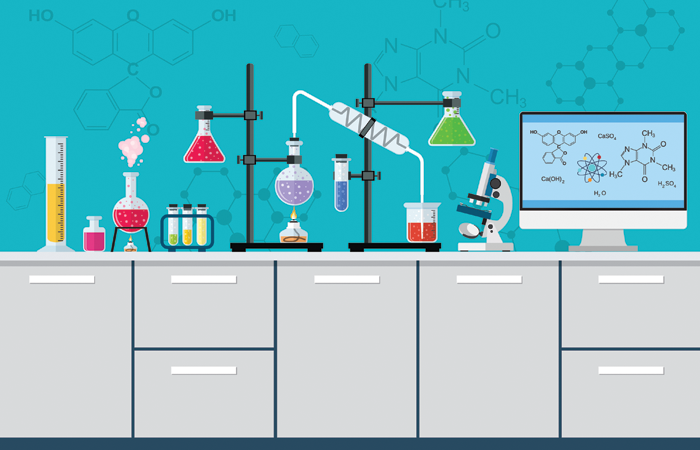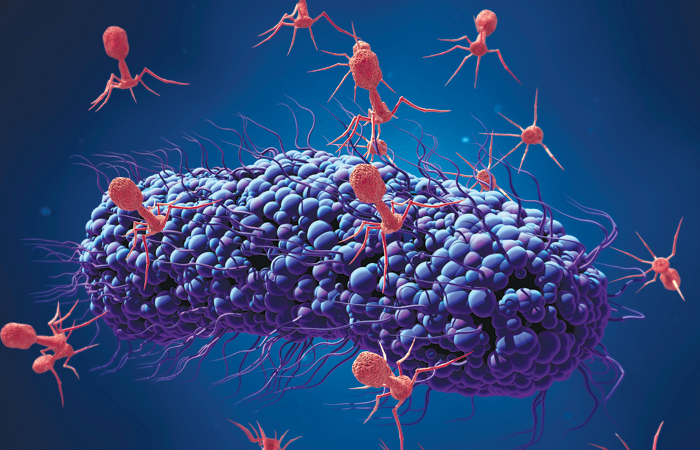
แบคทีริโอเฟจ: แนวทางใหม่ของการควบคุมแบคทีเรียในอาหาร
โดย: ผู้ช่วยศาสตราจารย์ ดร.สุดสาย ตรีวานิช
ดร.ดำเกิง บัณฑิตอมร
Assistant Professor Sudsai Trevanich, Ph.D.
Damkerng Bundidamorn, Ph.D.
Department of Food Science and Technology
Faculty of Agro-Industry
Kasetsart University
fagisstn@ku.ac.th
Full article TH-EN
แบคทีเรียชนิดก่อโรคทางอาหารและแบคทีเรียที่ทำให้อาหารเน่าเสีย ยังคงเป็นปัญหาสำคัญสำหรับทุก ๆ ประเทศ รวมทั้งประเทศไทย เนื่องจากการปนเปื้อนของแบคทีเรียดังกล่าวสู่อาหารสามารถเกิดขึ้นได้ในทุกขั้นตอนของการผลิตอาหาร ผู้ผลิตอาหารใช้วิธีการต่างๆ เพื่อกำจัดหรือลดปริมาณของแบคทีเรียดังกล่าว เช่น สารเคมี ความร้อน ความดันสูง และรังสี เป็นต้น อย่างไรก็ตาม วิธีการเหล่านี้ยังมีข้อจำกัดหลายประการ เช่น เงินลงทุนเริ่มต้นสูง ความเสียหายที่อาจขึ้นกับอุปกรณ์และเครื่องมือในการผลิต ผลกระทบต่อคุณภาพทางประสาทสัมผัสและโภชนาการของอาหาร รวมถึงการยอมรับของผู้บริโภคต่อผลิตภัณฑ์อาหาร เป็นต้น
ปัจจุบันมีการประยุกต์ใช้เฟจในงานด้านต่างๆ เช่น พันธุวิศวกรรม การแพทย์ การรักษาสัตว์ป่วย การควบคุมโรคพืช การจำแนกและการตรวจสอบแบคทีเรีย การบำบัดน้ำเสีย และการควบคุมแบคทีเรียที่เกี่ยวข้องกับคุณภาพและความปลอดภัยของอาหารในทุกขั้นตอนของการผลิตอาหาร “Farm To Fork” เป็นต้น กรณีการประยุกต์ใช้ในอุตสาหกรรมอาหาร มีการใช้เฟจเพื่อทำลายแบคทีเรียบนสัตว์และผักผลไม้ในการผลิตขั้นต้น การฆ่าเชื้อบนพื้นผิวอุปกรณ์และเครื่องมือที่สัมผัสอาหารในโรงงานอาหาร และการใช้เป็นสารต้านจุลินทรีย์จากธรรมชาติในอาหาร/ผลิตภัณฑ์อาหาร หรือผ่านทางบรรจุภัณฑ์อาหาร เพื่อยืดอายุการเก็บรักษา หลายประเทศทั่วโลก เช่น สหรัฐอเมริกา แคนาดา สวิตเซอร์แลนด์ ออสเตรเลีย นิวซีแลนด์ อิสราเอล และสหภาพยุโรป เป็นต้น ได้รับรองและอนุญาตให้มีการใช้ผลิตภัณฑ์เฟจกับอาหาร
ปัจจุบันมีผลิตภัณฑ์เฟจทางการค้าที่ได้รับการรับรองว่ามีความปลอดภัย และนำมาใช้เพื่อควบคุมคุณภาพและความปลอดภัยของอาหารได้ อาทิ ผลิตภัณฑ์เฟจที่สามารถใช้ทำลาย Xanthomonas campestris pv. vesicatoria และ Pseudomonas syringae pv. tomato บนมะเขือเทศและพริก เป็นต้น
Food spoilage and pathogenic bacteria are remained a major problem for every country, including Thailand. This is due to the contamination of bacteria to food can occur at any stages along the food production. Food manufacturers use various methods to eliminate or reduce the amount of bacteria such as chemicals, heat, high pressure, radiation and etc. However, these methods still have many limitations, such as high initial investment capital, damage that may occur with equipment and production tools, effects on sensory quality and nutrition of food, as well as consumer acceptance of food products.
The use of chemicals for disinfection (such as chlorine and ozone) may affect the color, smell, texture of the product, or create residues. The use of pasteurized heat or sterilization affect the color, smell, texture of the product, and nutritional value. Therefore, it may not be suitable for use with fresh meat, fresh vegetables and fresh fruits. Radiation may cause carcinogens, and most consumers still do not accept food that has been irradiated. In addition, this method may destroy beneficial microorganisms found in natural foods. Hence, biological control using virus of bacteria or Bacteriophage or called shortly as ‘Phage’ is one option that has gained high attention because it is a natural way or green technology which is applied to control bacteria in food or throughout the food chain production.
At present, there are the phages that are applied for various fields such as genetic engineering, medical, sick animals’ treatment, plant disease control, identification and detection of bacteria, wastewater treatment, and control of bacteria related to food quality and safety in every stage from “Farm to Fork”. In case of the applying in the food industry, phage is used for destroying bacteria on animals and fruits and vegetables during a primary production. It uses for disinfection on equipment and tool’s contact surfaces in food factories, and uses as natural antimicrobial agents in food/food products or through food packaging in order to extend shelf life. Many countries around the world, such as the United States, Canada, Switzerland, Australia, New Zealand, Israel and the European Union, have certified and allowed the use of phage product on food.
Currently, there are commercial phage products that are certified as safety product, and can be used to control the quality and safety of food. For instance, Phage product which can be used to destroy Xanthomonas campestris pv. vesicatoria และ Pseudomonas syringae pv on tomato and chilli.

